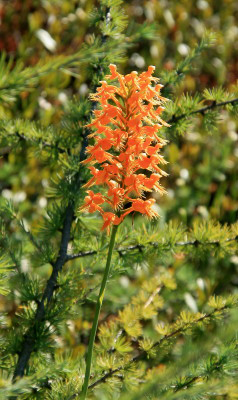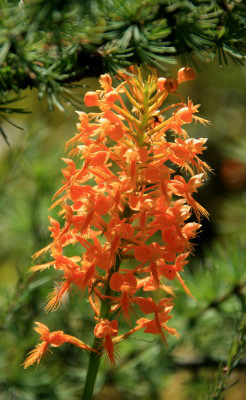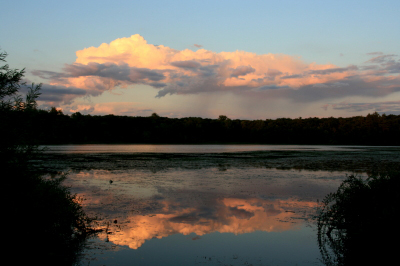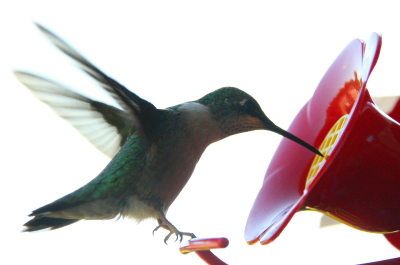
Welcome to Michigan Lakes!
We are all about Michigan lakes. Life on, in and near Michigan's lakefront brings a richness that rewards for a lifetime. Have a story or comments on your experience? You can be one of the first to share it with the world on our Michigan lake directory.
- Error
Crayola Orange jAN 23 09
Could you use a few mid-winter splashes of color? Me too. A few reminders that, while the Michigan landscape may presently be reduced to white snow, gray ice, and black branches, the arrangement is only a temporary one. Call me an optimist if you will, but I maintain that spring is on the way. A month has passed since the winter solstice, when the long slide into winter ended and our ascent toward rebirth began. Since then, we’ve gained thirty-eight minutes of daylight here in Caledonia. The sun rises five minutes earlier and sets thirty-three minutes later, and perhaps you’ve noticed that the twilight is lingering longer.
So even though it’s still very much winter—in fact, precisely for that reason—I thought I’d take this opportunity to tantalize you with a few reminders of the warmer months that lie ahead. A reminder, for instance, that frozen lakes don’t stay frozen forever. The kingdom of the ice fishing shanty will in due course surrender to the domain of the bass boat. New growth will spring up along shorelines now gripped by ice, and purple loosestrife will cast its arching braids into waters filled with the colors of northern sunsets.
Someday, no longer so terribly far in the future, you’ll wake up to hear a robin calling from a nearby tree. Or perhaps you’ll see him first, hopping across your lawn, patrolling the wet soil in search of earthworms. Autumn’s great migration south will be reversed by spring’s great infiltration north. The marshes will resound with the trill of redwing blackbirds staking out their territory. In the farmlands, gypsy bands of sandhill cranes will rove among the forlorn stubble of last year’s corn. On my deck, as in countless yards across Michigan, the hummingbird feeder will go back up, and the air will once again resound with the whir and thrum of tiny, feisty aerial acrobats vying for position at the nectar dispensers.
During the years when I worked as copy manager for Zondervan, one of my freelance writer had a gift for turning some particularly nice phrases. She once described a pumpkin as “Crayola orange.” I liked that adjective, and I’ve used it ever since, albeit judiciously. Not every orange in nature fits that descriptor. But some almost require it. How much more Crayola orange can you get, for instance, than butterfly weed?
To answer my own question, there is one plant which defines that peculiar, luminous quality of orange-ness for me: the orange fringed orchid, Platanthera ciliaris. With its racemes of brilliant flowers crowding the ends of slender green spires like flocks of tiny, tropical birds, this seldom-seen plant lights the bogs where it grows with its unmistakable presence. From late July through mid-August, the orange fringed orchid puts on a splendid pageant. You’ll be lucky to find a place where the plant grows, but it’s well worth looking for.
The cerulean flash of a bluebird in flight. The emerald jigsaw puzzle of maple leaves. The colors of spring are not so far on the horizon. Meanwhile, winter has colors of her own—muted colors, the pastel pinks and blues of baby clothing. Beauty in the Michigan outdoors is where we choose to find it, and January, like the ice queen in C. S. Lewis’s Chronicles of Narnia, possesses a severe and frosty loveliness. But when the snows and cold become a bit old, it’s good to look ahead to warmer months and brighter colors.





